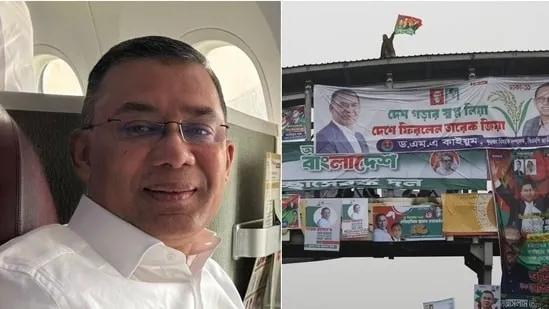

BNP Acting Chairman ends exile returning to massive Dhaka reception.
Marking a pivotal moment in the nation's political landscape, Tarique Rahman, the Acting Chairman of the Bangladesh Nationalist Party (BNP), has touched down in Dhaka after living in exile for 17 years. His return on Thursday is viewed as a major turning point following the dramatic ousting of former Prime Minister Sheikh Hasina during the July Uprising last year.
Rahman arrived from London aboard a Biman Bangladesh Airlines flight, accompanied by his wife, Zubaida Rahman, and their daughter, Zaima. Before landing at the Hazrat Shahjalal International Airport in the capital, the flight made a brief stopover in Sylhet.
Massive Public Reception
Anticipation regarding his return has turned the areas surrounding the airport into a sea of supporters. Thousands of BNP leaders and activists have gathered along the 300-foot road, also known as the 36 July Expressway, to offer a grand reception. Party workers have been organizing elaborate preparations since early morning to welcome their leader back to Bangladeshi soil.
Security and Government Cooperation
Ensuring a safe arrival, airport authorities implemented a strict 24-hour visitor ban at the terminal, effective from Wednesday evening. Only passengers with valid tickets are currently permitted entry.
The interim government has expressed full cooperation regarding the event. Press Secretary Shafiqul Alam confirmed that the administration welcomes Tarique Rahman back and has coordinated closely with BNP officials to finalize security arrangements.
Itinerary and Election Plans
Upon leaving the airport, Rahman is scheduled to address the gathering briefly on the expressway. His itinerary includes a visit to Evercare Hospital before heading to his residence on Gulshan Avenue.
Looking ahead to the political future, Rahman is set to register as a voter on December 27. Election offices will remain open on Saturday specifically to facilitate his national identity card process. Furthermore, the political machinery is already in motion for the parliamentary elections scheduled for February 12. Nomination papers have reportedly been collected in the Bogura-6 constituency for Rahman, and in Bogura-7 for Khaleda Zia, signaling a full-scale return to electoral politics for the BNP leadership.